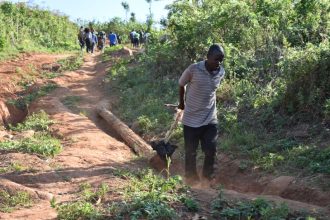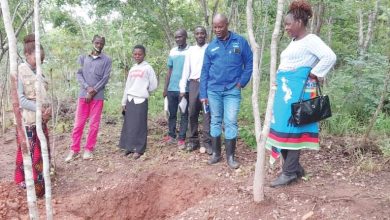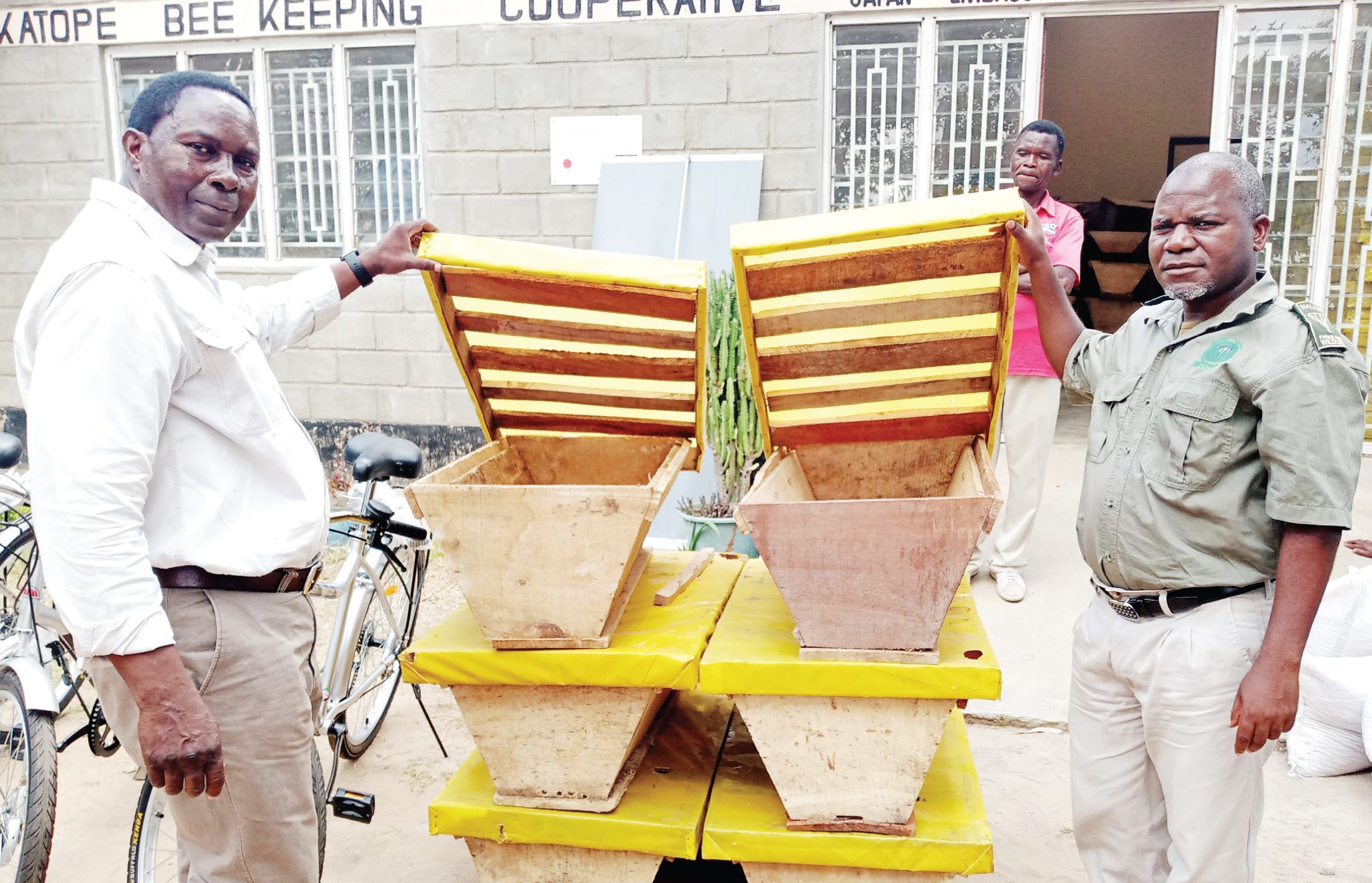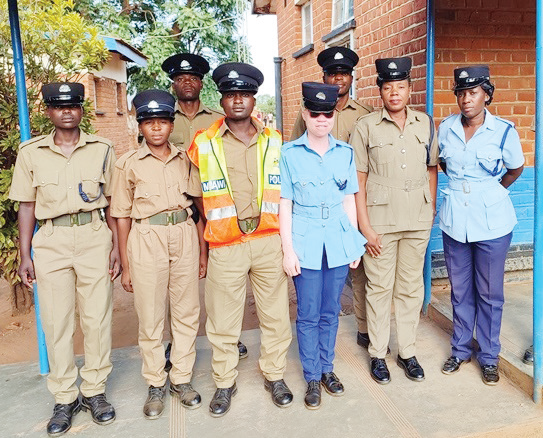More water points, yet no water in homes
Far from home, the recently released 2015-2016 Key Indicators Report of the yet-to-be officially released Demographic and Health Survey (DHS), shows that 87 percent of households in the country are accessing safe and quality water—a significant improvement from DHS 2010, which put it at 80 percent. However, as EPHRAIM NYONDO and KONDWANI KAMIYALA find out in this first part of water rights series, the buckets in the homes are still dry.

She has never heard of the Demographic Health Survey (DHS)—the volume that, after extensive survey, provides the data needed to monitor and evaluate population, health and nutrition issues in the country.
However, after I thoroughly explained to her about the DHS and its importance, Elube Nota from Khungubwe Village, Traditional Authority Ngowe in Chikwawa, began to nod her head not so much in agreement, rather in anticipation.
She was anticipating to understand why the document should matter to her.
Where do you draw water? I asked.
Her village lies in the general flood plains of the Shire Valley and her mud, grass-thatched house sits just a kilometre or two from the Shire River.
Here, she says, despite being sheltered by two streams and a large water body that is the Shire, accessing water is a big challenge.
“We have a borehole that was constructed by a certain NGO four years ago,” she says.
The water is sour, she narrates, adding: “Often it is dry, no water due to a fault in the machine, or, especially in the months between August and December, there is no water from it. We end up walking for two hours to draw water from open streams where goats graze too.”
Somehow Nota could be better off. Though barely trustworthy, the borehole is close to her house. However, for fellow village folks like Lilian Juwawo, who also draws from the same borehole, every day endures an hour or two to have their buckets filled.
“It is not easy,” she says, “but what else can we do?”
However, when put to her that the recent Key Indicator Report of the DHS says that more than eight in every 10 Malawians have steady access to safe and quality water, Nota shook her head vigorously.
It sounds like a joke, she challenges. Perhaps, she adds, some of us are not such Malawians.
“I can challenge that most of the water we use in a year comes from the streams because the borehole is not trusted. This explains the reason our area has always been purged with diseases such as cholera. I dispute what you are saying [about DHS],” she says.
It would rash, of course, to completely believe the story as told by the two. There are some areas in the district—and, again, in most rural areas where 87 percent of Malawians live—with, indeed, improved access to safe and quality water.
However, according to researcher Blessings Chinsinga, deputy director for the Centre for Social Research, issues of access to safe and quality water in the country need to be understood from a context. CSR has teamed up with Tearfund in a Water for All project to seek answers on how Malawi’s water woes can be solved from a climate justice perspective.
Much of what has been achieved, says Chinsinga, is water coverage. We have more water points that aim to provide water to the people, he says.
According to government documents, such water points include piped source, public tap or standpipe, tube well or borehole and protected well or spring.
However, argues Chinsinga, the challenge is that despite increased coverage, access is still a problem because most water points are either expensive, dysfunctional, far away and, again, erratic.
“As long as people do not have a steady supply of water in their homes, in their buckets, we cannot begin to think that we are doing better,” he says.
In fact, even in the urban areas—where the 2015-2016 DHS says access to improved drinking water source among households is now at 98 percent than among those in rural areas at 85 percent—the situation is glum among the majority in peri-urban areas.
Cecilia Tsirize lives in the populous Ndirande Township in Blantyre with a household of seven people. Water is one of her major worries.
“At times, the pipes run dry and we resort to draw water from the boreholes. It is very difficult to draw water as there are so many people struggling to get water. When I leave my pails on the queue at the borehole around 7:00am, I draw water around three in the afternoon as the queues are very long,” says Tsirize.
To avoid such delays in drawing water, 70-year-old Martha Masina says she has to wake up around three in the morning and make it to the borehole.
“If you go around 7 in the morning, you are apt to find long queues,” says Masina.
Lydia Gondwe has known worse days of water problems in Lilongwe’s Area 25, sector 4. She recalls of a time they had no water for over a fortnight.
“Right now the [Lilongwe] water board has started rationing water and we fear we are going back to the days when we could at times go for over 16 days without water. This is very inhuman and unfair as life without water is unbearable,” says Gondwe.
According to her, when taps run dry for long periods, people resort to drawing water from unprotected wells from nearby gardens. This, she adds, leads to increased cases of diarrhea.
Mzuzu resident Awema Medson says the Northern Region Water Board (NRWB) rations water. For instance, she says, the SOS residential area where she lives has dry nights, while Mchengautuwa has no water during the day.
“Since last year, we usually have dry taps almost every night. This is between 9pm and 4am. In other areas, like Mchengautuwa, there is no water from around 7:00am to something around 5:00pm. It is hectic to draw water in advance during the night,” she says.
The voices, against the hopeful figures of the DHS, paints a gloomy picture in the access to water—a precious heartbeat of life.
Data sourced from cleanwater.org, estimates that 7500 – 10 000 hand pump water wells in Malawi are broken.
Over 40 percent of the hand pumps in rural Malawi are non-functioning, it shows.
2007 Unicef documents show that millions have to find alternative water sources, and most are unprotected. As a result, shows Unicef, 30 000 people die every year in Malawi from issues caused by dirty water. n





